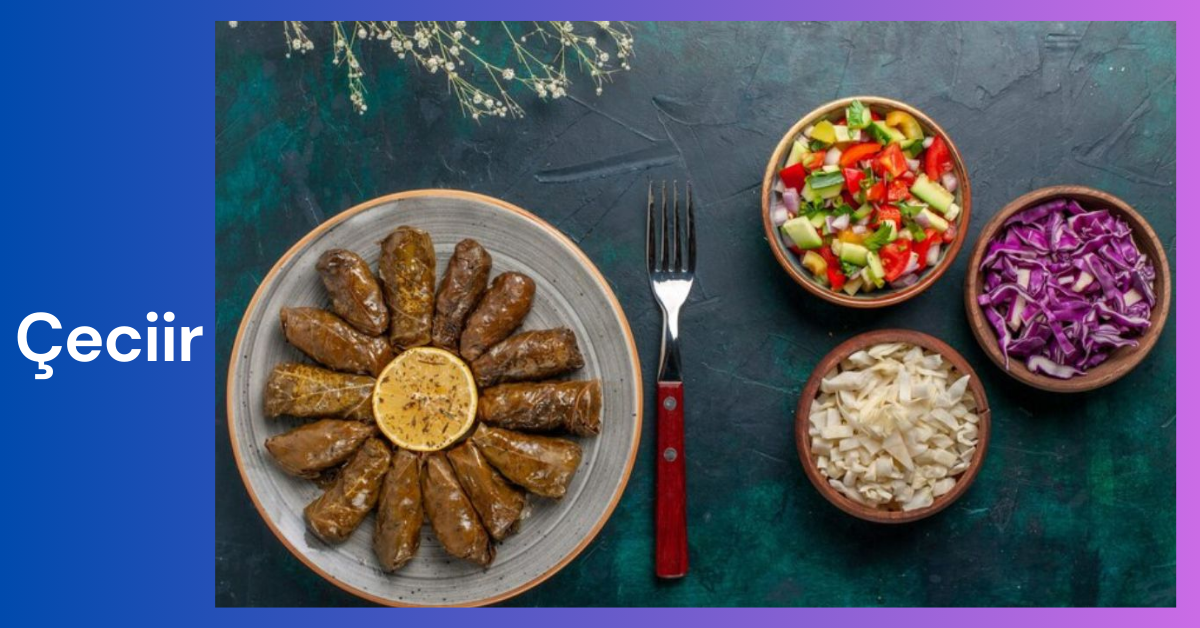
In recent years, traditional dishes from around the world have gained immense popularity, with many food enthusiasts and health-conscious individuals embracing diverse culinary experiences.
Çeciir is more than just a dish; it’s a cultural symbol deeply rooted in tradition. Centered around chickpeas, çeciir is celebrated for its rich flavor and numerous health benefits, making it a cherished part of various cuisines.
Among these traditional dishes is “çeciir,” a delightful and culturally rich food centered around chickpeas.
In this comprehensive guide, we’ll explore the origins, preparation, health benefits, and cultural significance of çeciir.
We’ll also provide practical tips for incorporating this nutritious dish into your diet, making it easy for you to appreciate and enjoy.
What is Çeciir?
Çeciir is a traditional dish that highlights the versatility and nutritional benefits of chickpeas.
The name “çeciir” is derived from the Turkish word for chickpeas, “ceviz,” with a regional twist.
This dish is not just a staple food but a cultural symbol in various regions, representing community, heritage, and culinary artistry.
The Cultural Significance of Çeciir
In many cultures, çeciir holds a special place at the table. It is often prepared during festivals, family gatherings, and special occasions.
The preparation and sharing of çeciir embody values of hospitality, tradition, and unity.
For instance, in Turkey and some Middle Eastern countries, çeciir is often enjoyed as part of a larger feast, symbolizing togetherness and celebration.
The History of Çeciir
Origins and Evolution
The origins of çeciir can be traced back to ancient civilizations where chickpeas were a staple food.
Chickpeas have been cultivated in the Middle East for thousands of years, making them one of the oldest legumes known to humanity.
The dish itself has evolved over time, with various regions adding their unique flavors and techniques.
Regional Variations
Çeciir has numerous regional variations, each offering a unique twist on this traditional dish.
In Turkey, çeciir is often prepared with a blend of spices, onions, and garlic, while in the Middle East, you might find it flavored with herbs like parsley and cumin.
These variations reflect local ingredients, cultural influences, and culinary preferences.
Health Benefits of Çeciir
Nutritional Profile
Çeciir, being primarily made from chickpeas, is packed with nutrients. Chickpeas are an excellent source of protein, fiber, vitamins, and minerals. They are particularly rich in:
- Protein: Essential for muscle repair and growth.
- Fiber: Aids in digestion and helps maintain healthy blood sugar levels.
- Vitamins: Chickpeas provide significant amounts of B vitamins, including folate, which is crucial for cell function and metabolism.
- Minerals: Chickpeas are a good source of iron, magnesium, and zinc, important for various bodily functions.
Weight Management and Satiety
Due to their high fiber and protein content, chickpeas can help you feel full and satisfied, making them a great choice for weight management.
Including çeciir in your meals can help reduce overall calorie intake by curbing hunger and promoting a sense of fullness.
Heart Health
The fiber and antioxidants in çeciir can contribute to heart health.
Regular consumption of chickpeas has been associated with lower cholesterol levels and improved cardiovascular health.
The potassium content also helps regulate blood pressure.
How to Prepare Çeciir
Traditional Preparation Methods
Preparing çeciir traditionally involves cooking chickpeas until tender and then combining them with a variety of ingredients. Here is a basic recipe to get you started:
Ingredients
- 1 cup dried chickpeas (or 2 cups canned chickpeas)
- 1 onion, finely chopped
- 2 cloves garlic, minced
- 1 tablespoon olive oil
- 1 teaspoon ground cumin
- 1 teaspoon paprika
- Salt and pepper, to taste
- Fresh parsley, chopped (for garnish)
Instructions
- Soak the Chickpeas: If using dried chickpeas, soak them in water overnight. Drain and rinse before cooking.
- Cook the Chickpeas: In a large pot, cover the chickpeas with fresh water. Bring to a boil, then reduce heat and simmer for 1-2 hours, or until tender. Drain and set aside.
- Sauté the Vegetables: In a large skillet, heat olive oil over medium heat. Add the chopped onion and garlic, cooking until softened and golden brown.
- Combine Ingredients: Add the cooked chickpeas to the skillet, along with cumin, paprika, salt, and pepper. Stir well to combine and heat through.
- Garnish and Serve: Garnish with fresh parsley and serve warm.
Modern Twists and Variations
While traditional çeciir is delicious, you can experiment with various ingredients to create your own variations. Here are a few ideas:
- Add Vegetables: Incorporate diced tomatoes, bell peppers, or spinach for added flavor and nutrition.
- Spicy Çeciir: Add a pinch of cayenne pepper or red chili flakes to give your çeciir a spicy kick.
- Herb Infusion: Experiment with different herbs such as cilantro or dill for unique flavor profiles.
Çeciir in Modern Cuisine
Popularity in the USA
In recent years, çeciir has gained popularity in the USA, particularly among those who are exploring international cuisines or following plant-based diets.
Its versatility makes it a great addition to salads, wraps, and grain bowls.
Çeciir in Restaurants and Food Trends
Many restaurants and food trucks have embraced çeciir, often featuring it as part of a broader menu of Mediterranean or Middle Eastern dishes.
Its nutritious profile and rich flavor make it a favorite among health-conscious diners and food enthusiasts alike.
Tips for Incorporating Çeciir into Your Diet
Meal Planning and Preparation
Incorporating çeciir into your diet can be both simple and rewarding. Here are some tips for making çeciir a regular part of your meals:
- Batch Cooking: Prepare a large batch of çeciir and store it in the refrigerator for up to a week. This makes it easy to add to various meals throughout the week.
- Creative Serving Ideas: Use çeciir as a filling for wraps, a topping for salads, or a side dish for grilled meats and vegetables.
- Freezing: You can also freeze cooked çeciir for up to three months, making it a convenient option for busy days.
Pairing Çeciir with Other Foods
Çeciir pairs well with a variety of foods, enhancing both flavor and nutrition. Here are a few ideas for combining çeciir with other dishes:
- Whole Grains: Serve çeciir over quinoa, brown rice, or farro for a complete and satisfying meal.
- Fresh Vegetables: Pair with a side of roasted or steamed vegetables for a balanced plate.
- Lean Proteins: Complement with grilled chicken or fish for added protein.
Conclusion
Çeciir is more than just a dish—it’s a celebration of cultural heritage and a testament to the versatility of chickpeas.
Whether you’re enjoying a traditional preparation or experimenting with modern variations, çeciir offers a delicious and nutritious way to explore global cuisines.
With its rich history, health benefits, and ease of preparation, çeciir is a wonderful addition to any meal plan.
Embrace the tradition, enjoy the flavors, and share the joy of çeciir with friends and family.
FAQs about Çeciir
What makes çeciir different from other chickpea dishes?
Çeciir is distinguished by its unique blend of regional spices and preparation methods, which vary by culture. This gives it a distinct flavor profile that sets it apart from other chickpea recipes.
Can çeciir be made ahead of time?
Yes, çeciir can be prepared in advance and stored in the refrigerator for up to a week or frozen for longer periods. It’s a great option for meal prepping and quick meals.
What are some common variations of çeciir?
Common variations include adding ingredients like tomatoes, bell peppers, or different herbs and spices. Each region may have its own twist, making çeciir versatile and adaptable.
How can I make çeciir more flavorful?
Enhance the flavor of çeciir by using fresh herbs, a variety of spices, or a splash of lemon juice. Experimenting with these additions can elevate the taste of the dish.
Is çeciir a good option for a low-carb diet?
While çeciir is nutritious, it is relatively high in carbohydrates due to the chickpeas. For a lower-carb alternative, consider reducing the chickpeas or pairing it with low-carb vegetables.
Can çeciir be served cold?
Yes, çeciir can be enjoyed cold as part of salads or as a chilled side dish. This makes it a versatile option for various meal settings and occasions.
What is the best way to store çeciir leftovers?
Store çeciir leftovers in an airtight container in the refrigerator for up to a week. For longer storage, freezing in individual portions is recommended to maintain freshness.





